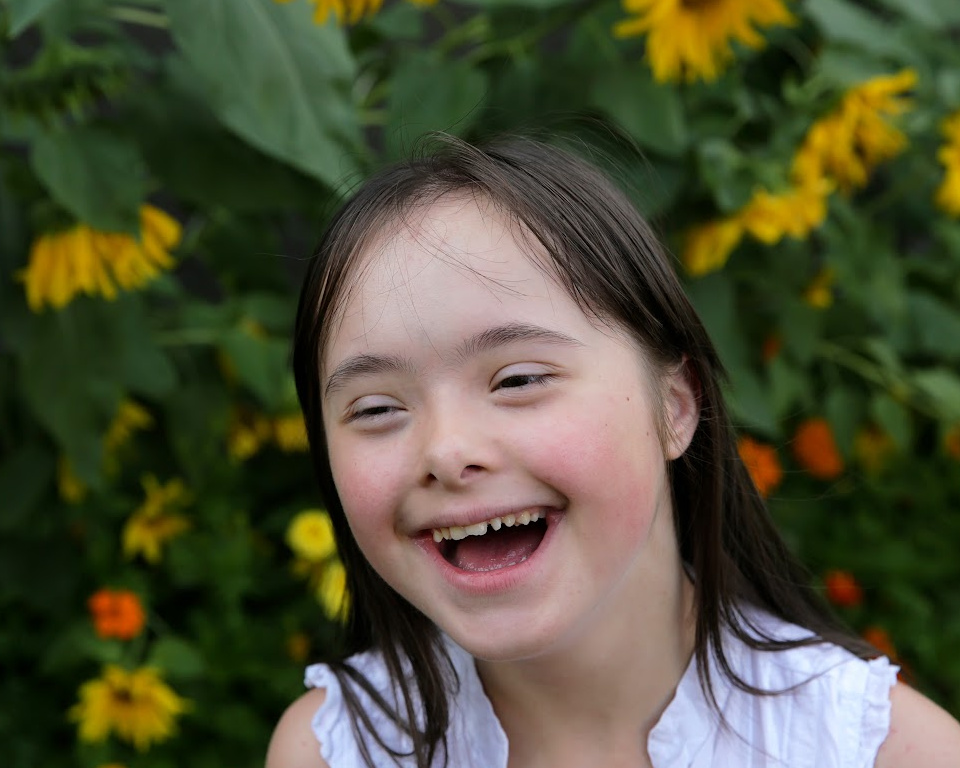Understanding how to communicate with a nonverbal autistic child is a challenge many parents, caregivers,…

Similarities Between Autism and Down Syndrome
Autism Spectrum Disorder (ASD) and Down syndrome (DS) stand as distinct medical profiles, each with its characteristic intricacies and challenges that touch the lives of many families. While they present their uniqueness, exploring the similarities between autism and down syndrome sheds light on the shared experiences that can often be seen..
These overlapping characteristics can include a robust affinity for predictable routines, differences in sensory processing, variations in expressive communication, and distinct behavioral patterns. Recognizing these autism and down syndrome similarities is fundamental for enhancing understanding, empathy, and the support systems that are essential for individuals navigating these conditions.
Notably, shared traits of autism and down syndrome can sometimes lead to a dual diagnosis, which presents its unique set of challenges and demands. This complexity underscores the importance of a nuanced approach to care and support. Understanding the autism and down syndrome comparison is not just academically intriguing; it holds real-world implications for the therapeutic strategies that can significantly improve day-to-day life for those affected.
Key Takeaways
- ASD and DS, while separate conditions, have notable overlapping features.
- Preference for routine is a common trait in individuals with either condition.
- Both conditions involve unique sensory processing and communication challenges.
- Behavioral patterns, such as repetitive actions, can be observed in both ASD and DS.
- Individuals with concurrent diagnoses of ASD and DS may require specialized support strategies.
Understanding Autism and Down Syndrome as Distinct Conditions
Exploring the similarities and differences of autism and down syndrome can provide greater insight into how these two conditions impact the lives of individuals and their families. While there are certain commonalities between autism and down syndrome, it’s essential to recognize them as distinct conditions each with its own set of characteristics and challenges.
Autism Spectrum Disorder (ASD) becomes evident in early childhood with a range of symptoms that can vary significantly from one person to another. According to the CDC, autism affects 1 in 44 children, and though signs can appear by the age of 2, some diagnoses may not occur until later in life. One of the key features of autism is that it does not impact physical appearance, which can sometimes make it harder to detect without a thorough behavioral assessment.
In contrast, Down syndrome is immediately identifiable through certain physical features. Medical advancements allow for detection during pregnancy or soon after birth, with techniques like prenatal karyotyping or blood tests that reveal the genetic anomaly on chromosome 21. Notably, Down syndrome sometimes accompanies distinctive physical traits such as upward slanted eyes and smaller hands.
Despite these disparities, there is an overlap between autism and down syndrome. Both conditions may present a range of health-related challenges unique to each individual. For instance, autism is often associated with co-occurring conditions like seizures and sleep disorders. Meanwhile, Down syndrome can predispose individuals to physical health issues such as heart defects and increased vulnerability to infections and certain diseases.
By examining the distinct aspects and the overlap between autism and down syndrome, it becomes possible to foster a deeper understanding and develop more effective support strategies. Recognizing the similarities and differences of autism and down syndrome is paramount for healthcare professionals, educators, and support networks in tailoring their approaches to accommodate the nuanced needs of each individual.

Similarities Between Autism and Down Syndrome
Exploring the shared traits of autism and Down syndrome reveals a fascinating intersection between the two conditions. Although they have distinct origins and manifestations, their overlapping characteristics present valuable insights for understanding and supporting those affected. In this exploration, we delve into the areas of communication, behavior, sensory processing, and social interaction where the similarities in symptoms of autism and down syndrome become most evident.
Communication Challenges and Language Development
Both individuals with autism and those with Down syndrome often face hurdles with language and communication. Autism can cause atypical language usage and may even result in the regression of previously acquired language abilities. On the other hand, people with Down syndrome might show delayed language development similar to typically developing peers. These expressive challenges underscore the Autism and Down Syndrome comparison in the sphere of communication.
Behavioral Characteristics: Repetitive Behaviors and Focused Interests
- Adherence to routines
- Repetitive play patterns
- Consistent and focused interests
Recognizing the commonalities between autism and Down syndrome becomes clear when observing their behavioral patterns. Both conditions exhibit strong inclinations towards routine and structure, as well as repetitive play. Despite potential variation in playstyle parallel in autism versus joint attention in Down syndrome the consistency of these behaviors is a key point of overlap.
Sensory Processing and Social Interaction
Differences in sensory processing are notable shared traits of autism and Down syndrome, often leading to the need for environmental adjustments. Socially, the similarities and differences of autism and Down syndrome emerge, as autistic individuals sometimes appear distant, contrasting with the typically sociable demeanor of those with Down syndrome. Despite these differences, both groups may experience social anxieties and similar issues with making eye contact.

Delineating the Differences: Autism vs. Down Syndrome
Recognizing the distinctions between autism and Down syndrome is essential for accurate diagnosis and tailored care. Although both conditions are developmental in nature, they are characterized by different sets of challenges and needs. The comparison of autism and down syndrome characteristics offers valuable insights into the specific support required for each condition.
Intellectual Abilities: Autism spectrum disorders (ASD) cover a broad spectrum of intellectual abilities, ranging from nonverbal individuals to those with high-level verbal skills and intellectual capacities. Down syndrome (DS), however, typically involves a more uniform presentation of cognitive delays and challenges.
Physical Appearance: Unlike autism, Down syndrome is often associated with certain physical traits such as almond-shaped eyes, a single crease across the palm, and a smaller stature, making it more recognizable based on appearance alone.
Social Interaction: Individuals with autism may display varying levels of social engagement, and some may show a preference for solitude. In contrast, people with Down syndrome are generally recognized for their sociability and warmth in interactions, although this can vary from person to person.
Medical Concerns: Down syndrome can present a range of health issues like congenital heart defects and hypotonia that may require surgeries or ongoing medical attention. While autism is primarily a developmental and behavioral condition, certain associated medical concerns such as gastrointestinal issues and sleep disturbances may exist.
Treatment Focus: Intervention for those with autism often emphasizes the development of social and communication skills, whereas Down syndrome therapies may pay closer attention to improving speech clarity and addressing the physical health issues.
- Speech therapy
- Occupational therapy
- Physical health management
Despite these autism and down syndrome differences, it is crucial to provide early and customized strategies to empower individuals with either condition, maximizing their potential and quality of life.
Conclusion
Understanding the synergy between autism and Down syndrome is key to crafting interventions that genuinely enhance the lives of those affected. Personalized care plans, honed by the insights gained from recognizing the commonalities and unique challenges of these conditions, pave the way for meaningful progress. The adoption of early intervention for autism and down syndrome proves particularly beneficial, offering individuals the opportunity to reach their fullest potential.
Improving Lives Through Support and Early Intervention
Central to improving quality of life with autism and down syndrome is the implementation of robust support and early developmental strategies. These interventions can mitigate the impact of the conditions on daily functioning, furnishing individuals with the skills required for a more autonomous and fulfilling life. Speech therapy and social skills development, combined with appropriate medical care, are instrumental in fostering a resilient, adaptable approach to the diverse challenges that individuals may encounter.
Additional Resources and Support Systems
As we acknowledge the need for comprehensive support, it’s heartening to recognize the contribution of organizations such as the Autism Society and the National Down Syndrome Society. These institutions not only offer resources tailored to the specific needs of these communities but also advocate for their broader rights and integration into society through educational outreach. The Disability Rights Education & Defense Fund stands as another pillar, ensuring that individuals’ rights are upheld. Collectively, these resources form a network of advocacy and assistance that undergirds the journey towards an inclusive and enriched existence for those with autism, Down syndrome, or both.
FAQs
What are some similarities between autism and Down syndrome?
Some similarities between the two conditions include challenges with communication and expressive language, a preference for routine and predictability, sensory processing issues, and certain behavioral patterns like repetitive play and focused interests.
Can a person have both autism and Down syndrome?
Yes, an individual can have both conditions, a scenario known as a dual diagnosis. Although each condition is distinct, there is an estimated 20% prevalence of autism spectrum disorders in individuals with Down syndrome.
How do autism and Down syndrome differ in terms of physical appearance?
Autism does not typically affect physical appearance and is not visible externally. Contrarily, Down syndrome is characterized by distinct physical features, such as upward slanted eyes, a flat facial profile, and small stature.
Are there differences in social interactions between individuals with autism and those with Down syndrome?
Yes, there are differences. Individuals with autism might show varied interest in social interactions and may struggle with social cues. On the other hand, people with Down syndrome are usually sociable and enjoy interactions, although they may still have difficulties with communication.
How are the language skills affected in autism compared to Down syndrome?
Those with autism may exhibit diverse language abilities, ranging from nonverbal communication to atypical language patterns. People with Down syndrome also display a range of language skills, but typically their language development follows the pattern of neurotypical children, albeit at a slower pace.
What types of interventions are helpful for individuals with autism and/or Down syndrome?
Interventions often include speech and language therapy, occupational therapy for sensory issues, physical therapy for motor skills, social skills training, and specialized educational support. The exact type of intervention varies depending on the individual’s needs and may be more specific if there is a dual diagnosis.
What resources are available for individuals with autism and Down syndrome?
Organizations such as the Autism Society and the National Down Syndrome Society provide educational materials, support programs, and advocacy. The Disability Rights Education & Defense Fund is also a valuable resource for legal and civil rights guidance.



This Post Has 0 Comments